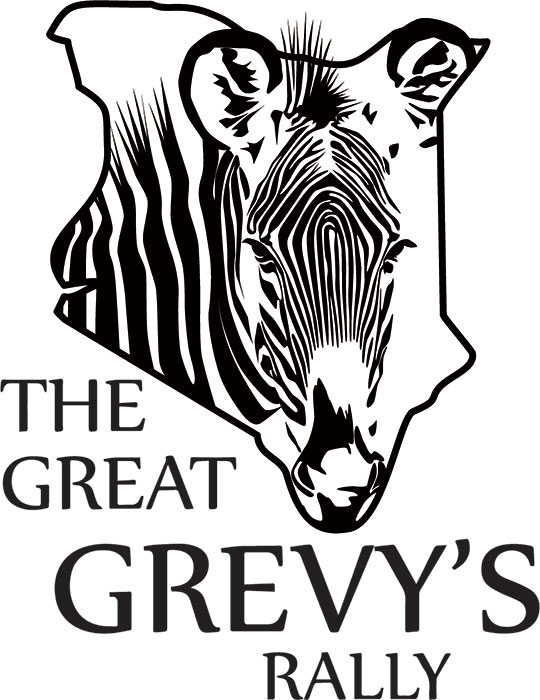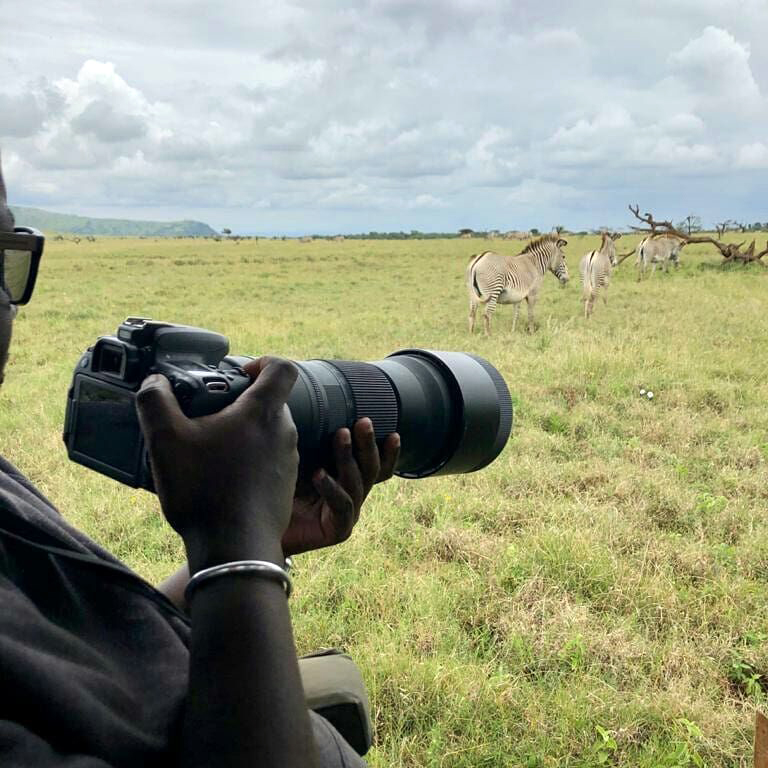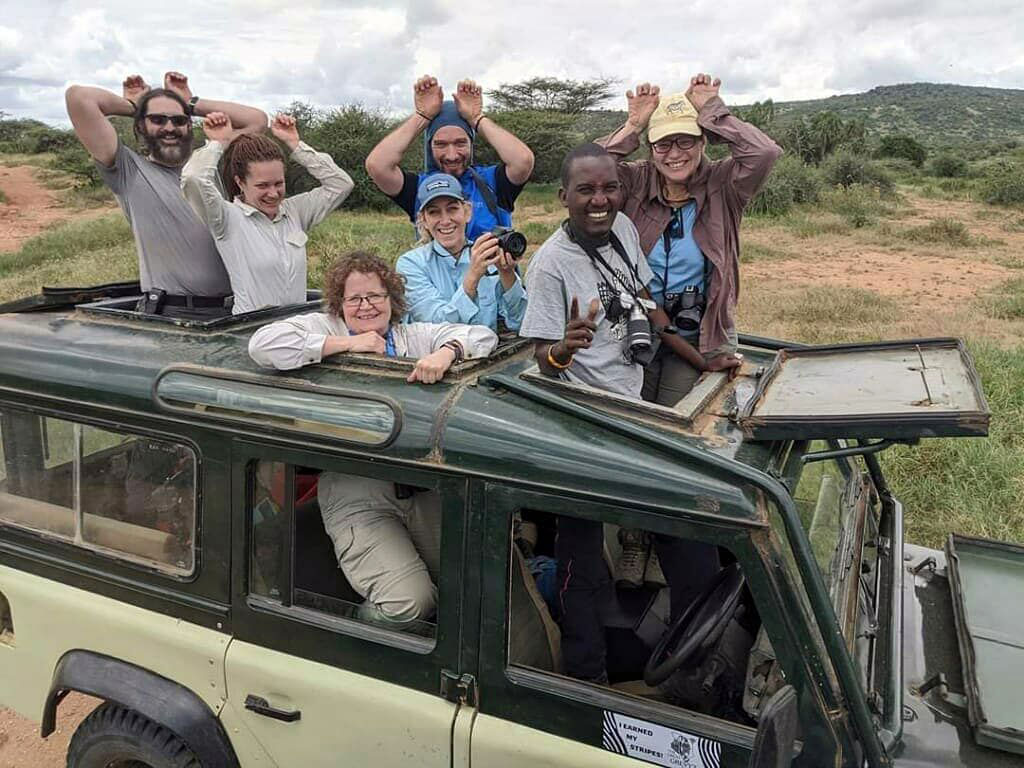Counting Grevy’s zebra
The Grevy’s zebra (Equus grevyi) is one of Africa’s most endangered large mammals and is currently categorized as endangered by the IUCN Equid Specialist group and is listed on CITES Appendix I. The species has undergone one of the most substantial reductions of range of any land mammal, declining from an estimated 15,000 individuals in the 1970’s to approximately 3042 individuals in 2018, an 80% decline in four decades. As such, getting accurate population counts and how this is changing from year to year is imperative.
Counting Grevy’s zebra has always proved challenging. Traditional aerial counts are ineffective as detection can be problematic when animals shade under trees in the heat of the day and differentiation with plains zebra can be difficult. The most reliable way to count Grevy’s zebra is through photographic recording of Grevy’s zebra, using individual unique stripe patterns on each animal like fingerprints for identification, with statistical formulas helping to derive more accurate population estimates. Additionally, a total count with on the ground observers across the entire Grevy’s zebra range provides a much better estimate than a regular aerial count.
© Paulo Leroux
About the Great Grevy’s Rally
In 2016, the Grevy’s Zebra Technical Committee enlisted the public in the first ever citizen science Grevy’s Zebra survey, dubbed the Great Grevy’s Rally. This was carried out by participants driving throughout the Grevy’s Zebra Range, repeatedly covering every accessible part of the landscape over two days and photographing every visible Grevy’s zebra. This produced over 25,000 useable images that were analyzed to produce a population estimate of 2350 individual Grevy’s zebra in Kenya. This photographic census was repeated in 2018 and 2020 and these rallies collectively resulted in greatly refined population estimates that were accepted by the Kenya Wildlife Service (KWS) as the official status of population numbers in the country.
The next GGR was scheduled for 2022. However, Northern Kenya experienced five consecutive failed rainy seasons, resulting in one of the most severe droughts experienced in Kenya for close to 40 years. As a result, the decision was made to postpone the planned census until such a time as the committee could assess the body condition of the target Grevy’s Zebra populations.
GGR 2024
Due to the challenges faced in the landscape in the last few years, GGR 2024 was slightly different in scale than the previous rallies and was more of an intensive targeted exercise than the fully expansive rally that we had become used to. Teams headed out for the Rally on the 27th and 28th of January 2024. Focus was placed on blocks that were already known to have had significant Grevy’s zebra populations through the previous years.
The methodology employed during the GGR 2024 generally followed that of previous rallies, with a focus on photographic census following a modified Spatially Explicit Capture-Recapture (SECR) format. This in essence treats ID photos taken at one point in time as the first ‘capture’ of the animal, with a subsequent photograph of the same animal taken on a different day treated as the ‘recapture’ of the same individual, allowing simpler statistics for population estimates. In addition, we also included a visual count record from each team, which helps give us an overall estimate of numbers and locations while we work to raise funding for the photo analysis component of the rally.
The Great Grevy’s Rally Event Schedule
Friday 26th January: On your mark!
The day before the rally begins all teams will travel to their survey location. Each team’s survey area and accommodation will have been previously confirmed. Each team will drive through Nanyuki where The Great Grevy’s Rally organizers will welcome participants at Cape Chestnut Nanyuki to deploy the rally materials and provide practical training on data collection.
Saturday 27th and Sunday 28th January: Go count Grevy’s zebra!
On Saturday morning all participants and conservationists will start early in the morning to survey their designated areas and record data on all the Grevy’s zebra observed throughout the day. On Saturday evening, enjoy a sundowner with a view of the beautiful landscape and prepare for day two of the survey. On Sunday, all teams will survey their areas to collect the Grevy’s zebra data for the second consecutive day to provide crucial data to estimate the total population.
Monday 29th January: Return and share!
The Great Grevy’s Rally organizers will welcome all the participants at Cape Chestnut Nanyuki to collect the data and equipment. Your data will be given directly to the scientists to start the analysis. (Alternatively, participants using their own cameras can send their photos and their data sheets into a Google drive folder).
Make sure to share with your friends and families about your weekend as a citizen scientist to save the endangered Grevy’s zebra! We hope that you will be inspired to return again and participate in future rallies for the conservation of these iconic species.
GGR Organizing Committee: Batuk, Grevy’s Zebra Trust, Kenya Wildlife Service, Laikipia Forum, Lewa Wildlife Conservancy, Marwell Wildlife, Mpala Research Centre, Northern Rangelands Trust, Princeton University, Samburu Trust, Saint Louis Zoo, Wildlife Direct.
GGR Partners: Action for Cheetahs Kenya, Community Conservancies [Il Ngwesi, Kalama, Kirimon, Lekurruki, Leparua, Ltungai, Meibae, Melako, Naibunga, Nakuprat-Gotu, Namunyak, Nasuulu, Nkoteiya, Oldonyiro, Sera and Westgate], County Conservancies [Baragoi, Ndoto and Nyiro], County Governments [Samburu, Laikipia, Isiolo, Marsabit and Meru], Tourism Operators and Private Land Owners [El Karama, Lewa Safari Camp, Lewa Wilderness, Loisaba, Mugie House, Ngorare Farm, Ol Doinyo Leboro, Ol Jogi, Ol Maisor, Sabuk, Sarova Shaba, Saruni Samburu, Segera, Sosian, Suyian Soul and Tumaren], Tropic Air, Tsavo Trust, Twiga Walinizi, WildBook, WildMe, Wildlife Works, Zoo Partners [Saint Louis Zoo, San Diego Zoo Global, Jacksonville Zoo, Sedgwick County Zoo, Miami Zoo and Lincoln Park Zoo].



